World Meteorological Organization
|
المنظمة العالمية للأرصاد الجوية (Arabic) 世界气象组织 (Chinese) Organisation météorologique mondiale (French) Всемирная Метеорологическая Организация (Russian) Organización Meteorológica Mundial (Spanish) | |
 | |
|
WMO flag | |
| Abbreviation |
WMO OMM |
|---|---|
| Formation | 23 March 1950 |
| Type | UN agency |
| Legal status | Active |
| Headquarters | Geneva, Switzerland |
Head |
Petteri Taalas (Secretary-General) David Grimes (President) |
| Website |
public |
The World Meteorological Organization (WMO) is an intergovernmental organization with a membership of 191 Member States and Territories. It originated from the International Meteorological Organization (IMO), which was founded in 1873. Established by the ratification of the WMO Convention on 23 March 1950, WMO became the specialised agency of the United Nations for meteorology (weather and climate), operational hydrology and related geophysical sciences a year later. Its current Secretary-General is Petteri Taalas[1] and the President of the World Meteorological Congress, its supreme body, is David Grimes.[2] The Organization is headquartered in Geneva, Switzerland.
The organization
The World Meteorological Organization (WMO) is a specialized agency of the United Nations. It is the UN system's authoritative voice on the state and behavior of the Earth's atmosphere, its interaction with the oceans, the climate it produces and the resulting distribution of water resources.[3]
WMO has a membership of 191 Member States and Territories as of February 2014. The Convention of the World Meteorological Organization was signed 11 October 1947 and established upon ratification on 23 March 1950. WMO became the specialized agency of the United Nations in 1951 for meteorology (weather and climate), operational hydrology and related geophysical sciences. It originated from the International Meteorological Organization (IMO), which was founded in 1873.[3]
The WMO hierarchy:
- The World Meteorological Congress, the supreme body of the Organization, determines policy. Each member state and territory is represented by a Permanent Representative with WMO when Congress meets every four years. Congress elects the President and Vice-Presidents of the Organization and members of the Executive Council; and appoints the Secretary-General.
- The Executive Council (EC) implements Congress decisions. It coordinates programmes, manages the budget, considers and acts on resolutions and recommendations from the regional associations and technical commissions, and studies and makes recommendations on matters affecting international meteorology and related activities. The Executive Council normally hold a session at least once a year.
- Six Regional Associations (RA) are responsible for the coordination of meteorological, hydrological and related activities within their respective Regions. They meet once every four years, and elect a president and vice-president. The president of each regional association is an ex officio member of the Executive Council.
- Eight Technical Commissions are responsible for studying meteorological and hydrological operational systems, applications and research. They establish methodology and procedures and make recommendations to Executive Council and the World Meteorological Congress.
- The Secretariat is headed by the Secretary-General, who is appointed by the World Meteorological Congress for a four-year term with a maximum tenure of 8 years. The Secretary-General appoints all staff, including the Deputy Secretary-General and the Assistant Secretary-General. The Secretariat currently has around 300 staff.[4]
Functions
Weather, climate and the water cycle shape almost every aspect of our lives. They can be benevolent and bring abundance and well-being, but they can also be dangerous and cause great damage: weather-, climate and water-related hazards account for nearly 90% of "natural" disasters. These powerful natural forces do not recognize national borders, thus global and regional cooperation is essential. Global data are needed to understand the behaviour of the Earth’s atmosphere and its interaction with the land and oceans - whether it be to predict next week’s weather or next year’s climate, forecasters must have timely, quality-assured, standardized information coming from all corners of the world. Even the accuracy of a two-day weather forecast relies on observations from far beyond national borders. The World Meteorological Organization provides the framework for this essential international cooperation among the National Meteorological and Hydrological Services of its 191 Member States and Territories.[5]
Weather
Thanks to the international coordination efforts of WMO, National Meteorological and Hydrological Services provide daily weather forecasts and early and reliable warnings of high-impact weather and climate events. These warnings help to save countless lives and to protect property and the environment from damage. They contribute to economic planning and decision-making, and help minimize the harm that weather, climate and water hazards can cause to socioeconomic development. The Organization also fosters collaboration between the National Meteorological and Hydrological Services to furthers the application of meteorology to public weather services, agriculture, aviation, shipping, energy, water resource management and many other economic sectors.[5]
The first step in producing weather forecasts is to gather non-stop observations of the environment from around the world. Millions of observations are gathered worldwide every day by over 50 satellites, 400 moored buoys, 1 250 drifting buoys, 4 000 aircraft from around 40 commercial aircraft companies, 7 300 ships and 10 000 land-based observing stations. WMO develops the technical standards for designing these and other observing instruments and for ensuring that the collected data are quality controlled and comparable. Data that pass the test are fed into the complex numerical weather prediction models that National Meteorological Services use to produce weather forecasts, early warnings of storms and other natural hazards, air-quality forecasts, climate predictions and risk assessments. These forecasts and related products are broadcast in real time to the public and myriads of users worldwide. This enables governments to provide reliable and effective weather services to protect lives and property and ensure sustainable economic development and the general welfare of their citizens. To achieve these objectives, WMO advocates for broad, open data policies and maintains standardized data and exchange mechanisms. It also collaborates on the development of innovative data collection and delivery systems.[5]
Climate
The stations of the WMO Global Atmosphere Watch play a vital role in detecting climate variability and change by monitoring long-term changes in levels of greenhouse gases, solar radiation and other atmospheric components to assess their effects on people, climate, regional and urban air quality, and marine and terrestrial ecosystems. They project the magnitude and rate of climate change and related impacts such as sea-level rise. WMO publishes an annual Greenhouse Gas Bulletin, with details on atmospheric concentrations of long-lived greenhouse gases including carbon dioxide, methane and nitrous oxide.[6]
The WMO-led Global Framework for Climate Services (GFCS) guides the development of science-based climate information and services to support decision-making in climate-sensitive sectors. GFCS coordinates actions at the national, regional and global levels to enhance the quality, quantity and use of climate services. Climate information empowers countries to implement the Paris Agreement on climate change and promotes sustainable development. The GFCS enables public- and private-sector decision-makers to plan and adapt their activities and projects in anticipation of changing conditions. Seasonal climate forecasts, in particular, are increasingly used for agriculture and food security, disaster risk reduction, energy, public health, water resources and other sectors.
The annually published WMO Statements on the status of the World Climate provides details of global, regional and national temperatures and extreme weather events. It also provides information on long-term climate change indicators include atmospheric concentrations of greenhouse gases, sea level rise, and sea ice extent. The year 2016 was the hottest year on record, with many weather and climate extremes, according to the most recent WMO report.[7]
The World Meteorological Organization further supports climate change assessments by providing data and models and by hosting and co-sponsoring the Intergovernmental Panel on Climate Change (IPCC), the Global Climate Observing System (GCOS) and the World Climate Research Programme (WCRP).
Water
Water is essential for the production of virtually all of our goods and services. It is the most important and widely used source of renewable energy - hydropower represents approximately 16% of total electricity production worldwide. The World Meteorological Organization promotes water-resource assessments by National Hydrological Services, which, in turn, provide the forecasts needed to plan water storage for domestic requirements, agricultural activities, hydroelectric power gener- ation and urban development.
The Organization also assists National Hydrological Services to establish and maintain systems for acquiring and disseminating accurate and timely information on the water cycle for formulating integrated water-resource management strategies. Equipped with better hydrological information, assessments and forecasts, countries are able to independently assess their water resources and respond to threats of floods and drought.
WMO Strategic Plan
The WMO Strategic Plan sets the directions and priorities to guide the activities of Members and constituent bodies to enable the improvement of their core information, products and services, to maintain necessary infrastructures and to directly benefit from advancements in science and technology. This Plan emphasizes the following key priorities:
- disaster risk reduction
- the Global Framework for Climate Services (GFCS)
- the WMO Integrated Global Observing System (WIGOS)
- aviation meteorological services
- polar and high mountain regions
- capacity development
- governance
Contributions to Sustainable Development Goals
The 2030 Agenda for Sustainable Development serves as the centerpiece for national and international policymaking over the next 15 years. It sets out 17 Sustainable Development Goals (SDGs) that the WMO community can contribute to at the national and international levels. National Meteorological and Hydrological Services (NMHSs) can benefit from the status of WMO as a Specialized Agency of the UN to engage with the 2030 Agenda. They can also draw on the partnerships that the WMO community continues to build with other communities, sectors and disciplines, for example, through national climate services and the Global Framework for Climate Services. As policymakers and the general public gain a better understand of the WMO contribution to sustainable development, National Meteorological and Hydrological Services can look forward to establishing an even stronger role in protecting life and property, and in building weather and climate resilience.
Meteorological codes
In keeping with its mandate to promote the standardization of meteorological observations, the WMO maintains numerous code forms for the representation and exchange of meteorological, oceanographical, and hydrological data. The traditional code forms, such as SYNOP, CLIMAT and TEMP, are character-based and their coding is position-based. Newer WMO code forms are designed for portability, extensibility and universality. These are BUFR, CREX, and, for gridded geo-positioned data, GRIB.
Recognitions received
- The WMO and United Nations Environment Programme (UNEP) jointly created Intergovernmental Panel on Climate Change (IPCC) received the Nobel Peace Prize in 2007 "for their efforts to build up and disseminate greater knowledge about anthropogenic (man-made) climate change, and to lay the foundations for the measures that are needed to counteract such change."[8]
World Meteorological Day

- World Meteorological Day is held annually on 23 March.[9]
Main public outreach materials
- The International Cloud Atlas - On 23 March 2017, WMO released a completely revised and updated electronic version combining 19th century traditions with 21st century technology. The International Cloud Atlas was first published by WMO predecessor, IMO, in 1896. The new version contains hundreds of images submitted by meteorologists, photographers and cloud lovers from around the globe. It includes new classifications, including volutus, a roll cloud; clouds from human activities such as the contrail, a vapour trail sometimes produced by airplanes; and asperitas, a dramatic undulated cloud which captured the public imagination. It also features meteorological phenomena like rainbows, halos, snow devils and hailstones.[10]
- The World Meteorological Organization at a Glance
- WMO Public website
- WMO for Youth
- WMO Bulletin (twice annually)
- WMO Greenhouse Gas Bulletin (annually)
- WMO Statements on the Status of the World Climate (annually)
WMO awards and prizes
- International Meteorological Organization Prize[11]
- Professor Dr Vilho Väisälä Awards[12]
- Norbert Gerbier-Mumm International Award (suspended in 2014)[13]
- WMO Research Award for Young Scientists[14]
- Professor Mariolopoulus Award[15]
Milestones
1853 First International Meteorological Conference (Brussels)
1873 International Meteorological Organization established (predecessor of WMO)
1947 WMO Convention agreed unanimously by Conference of Directors (Washington, DC)
1950 WMO Convention enters into force on 23 March
1951 WMO becomes a specialized agency of the United Nations
1957 Global Ozone Observing System set up
1957/1958 International Geophysical Year
1963 World Weather Watch (WWW) launched
1971 Tropical Cyclone project established (upgraded to Tropical Cyclone Programme in 1980)
1972 Operational Hydrology Programme established
1976 WMO issues first international assessment of the state of global ozone
1977 Integrated Global Ocean Services System (IGOSS) established jointly by WMO and UNESCO Intergovernmental Oceanographic Commission (IOC)
1978/1979 Global Weather Experiment and Monsoon Experiments under the Global Atmospheric Research Programme
1979 First World Climate Conference (leads to the establishment of the WMO World Climate Programme)
1985 Vienna Convention for the Protection of the Ozone Layer
1987 Montreal Protocol on Substances that Deplete the Ozone Layer
1988 Intergovernmental Panel on Climate Change (IPCC) established, co-sponsored by WMO and the United Nations Environment Programme (UNEP)
1989 Global Atmosphere Watch established
1990 Second World Climate Conference; International Decade for Natural Disaster Reduction
1991 WMO/UNEP convene first meeting of the Intergovernmental Negotiating Committee of the United Nations Framework Convention on Climate Change
1992 The Global Climate Observing System established
1993 World Hydrological Cycle Observing System (WHYCOS) launched
1995 Climate Information and Prediction Services (CLIPS) established
1998 Scientific Assessment of Ozone Depletion
1999 Inauguration of new WMO headquarters in Geneva
2005 Group on Earth Observations (GEO) Secretariat established
2007/2008 International Polar Year
2009 Third World Climate Conference establishes Global Framework for Climate Services
2014 Conference on the Gender Dimensions of Weather and Climate Services
2015 Sendai Framework for Disaster Risk Reduction 2015–2030; 2030 Agenda for Sustainable Development; Paris Agreement reached at the Conference of the Parties (COP21) of the UNFCCC
Membership
As of February 2014, WMO Members include a total of 185 Member States and 6 Member Territories.[16]
Ten United Nations member states are not members of WMO: Andorra, Equatorial Guinea, Grenada, Liechtenstein, Marshall Islands, Nauru, Palau, Saint Kitts and Nevis, Saint Vincent and the Grenadines and San Marino. Cook Islands and Niue are WMO Members but non-members of the United Nations. Vatican City and the states with limited recognition are not members of either organization.
The six WMO Member Territories are the British Caribbean Territories (joint meteorological organisation and membership),[16] French Polynesia, Hong Kong, Macau, Curaçao and Sint Maarten (joint meteorological service and membership)[16] and New Caledonia. (List of all members with admission dates.)
Membership by regional associations
Region I (Africa)
Region I consists of the states of Africa and a few former colonial powers. Region I has 57 member states and no member territories:[17]
 Algeria
Algeria Angola
Angola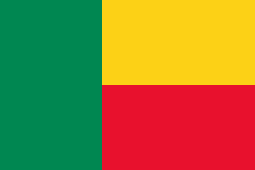 Benin
Benin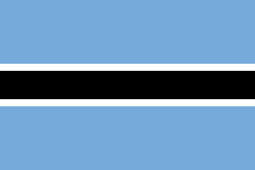 Botswana
Botswana Burkina Faso
Burkina Faso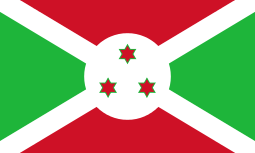 Burundi
Burundi Cameroon
Cameroon Cape Verde
Cape Verde Central African Republic
Central African Republic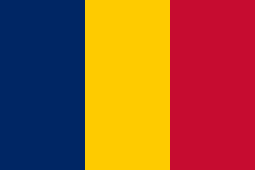 Chad
Chad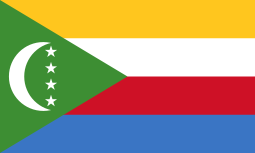 Comoros
Comoros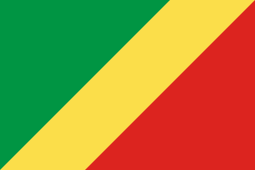 Republic of the Congo
Republic of the Congo Côte d'Ivoire
Côte d'Ivoire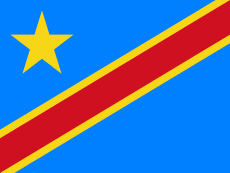 Democratic Republic of the Congo
Democratic Republic of the Congo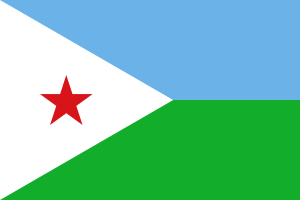 Djibouti
Djibouti Egypt
Egypt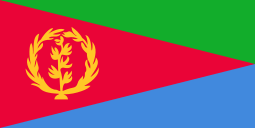 Eritrea
Eritrea Ethiopia
Ethiopia France
France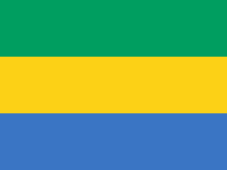 Gabon
Gabon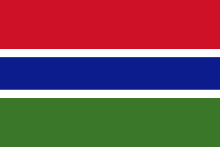 The Gambia
The Gambia Ghana
Ghana Guinea
Guinea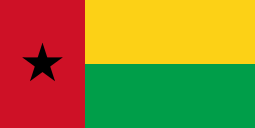 Guinea-Bissau
Guinea-Bissau Kenya
Kenya Lesotho
Lesotho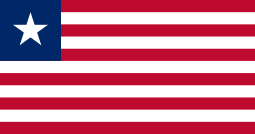 Liberia
Liberia Libya
Libya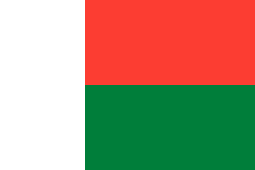 Madagascar
Madagascar Malawi
Malawi Mali
Mali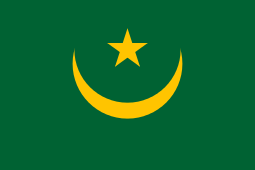 Mauritania
Mauritania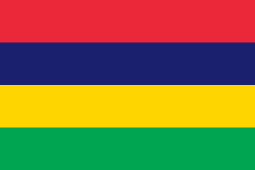 Mauritius
Mauritius Morocco
Morocco Mozambique
Mozambique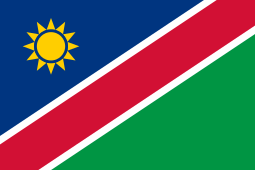 Namibia
Namibia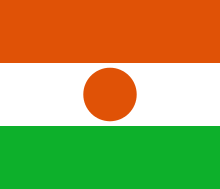 Niger
Niger Nigeria
Nigeria Portugal
Portugal Rwanda
Rwanda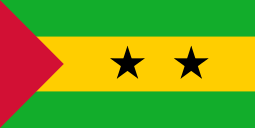 São Tomé and Príncipe
São Tomé and Príncipe Senegal
Senegal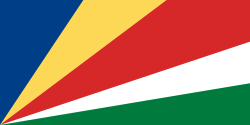 Seychelles
Seychelles Sierra Leone
Sierra Leone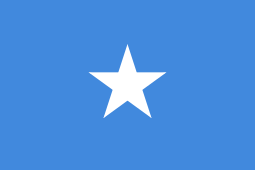 Somalia
Somalia South Africa
South Africa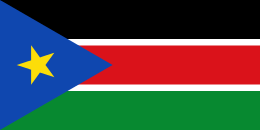 South Sudan
South Sudan Spain
Spain Sudan
Sudan Swaziland
Swaziland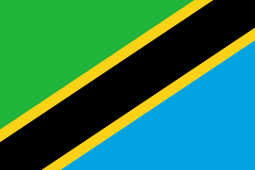 Tanzania, United Republic of
Tanzania, United Republic of Togo
Togo Tunisia
Tunisia Uganda
Uganda Zambia
Zambia Zimbabwe
Zimbabwe
Non-member
Region II (Asia)
Region II has 33 member states and 2 member territories. The member states are:[18]
 Afghanistan
Afghanistan Bahrain
Bahrain Bangladesh
Bangladesh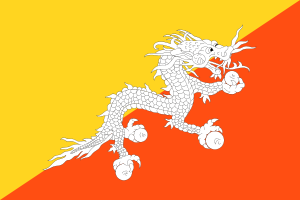 Bhutan
Bhutan Cambodia
Cambodia People's Republic of China
People's Republic of China Democratic People's Republic of Korea
Democratic People's Republic of Korea India
India Iran, Islamic Republic of
Iran, Islamic Republic of Iraq
Iraq Japan
Japan Kazakhstan
Kazakhstan Kuwait
Kuwait Kyrgyzstan
Kyrgyzstan Lao People's Democratic Republic
Lao People's Democratic Republic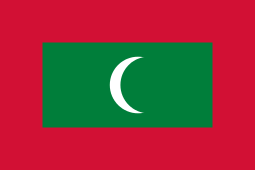 Maldives
Maldives Mongolia
Mongolia Myanmar
Myanmar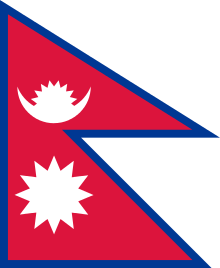 Nepal
Nepal Oman
Oman Pakistan
Pakistan Qatar
Qatar Republic of Korea
Republic of Korea Russian Federation
Russian Federation Saudi Arabia
Saudi Arabia Sri Lanka
Sri Lanka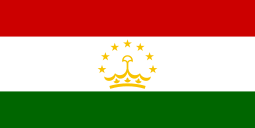 Tajikistan
Tajikistan Thailand
Thailand Turkmenistan
Turkmenistan United Arab Emirates
United Arab Emirates Uzbekistan
Uzbekistan Viet Nam
Viet Nam Yemen
Yemen
The member territories are:
Region III (South America)
Region III consists of the states of South America, including France as French Guiana is an overseas region of France. It has a total of 13 member states and no member territories:[19]
Region IV (North America, Central America and the Caribbean)
Region IV consists of the states of North America, Central America, and the Caribbean, including three European states with dependencies within the region. It has a total of 25 member states and 2 member territories. The member states are:[20]
 Antigua and Barbuda
Antigua and Barbuda Bahamas
Bahamas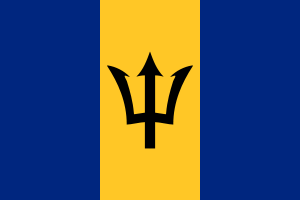 Barbados
Barbados Belize
Belize Canada
Canada Colombia
Colombia Costa Rica
Costa Rica Cuba
Cuba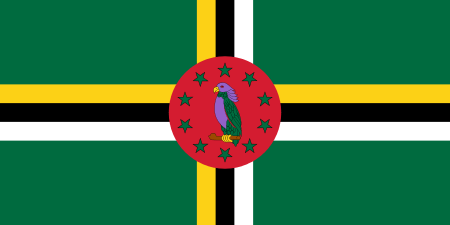 Dominica
Dominica Dominican Republic
Dominican Republic El Salvador
El Salvador France
France Guatemala
Guatemala Haiti
Haiti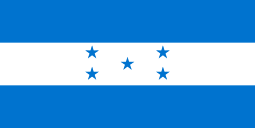 Honduras
Honduras Jamaica
Jamaica Mexico
Mexico Netherlands
Netherlands Nicaragua
Nicaragua Panama
Panama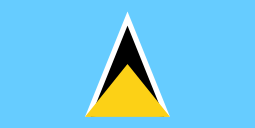 Saint Lucia
Saint Lucia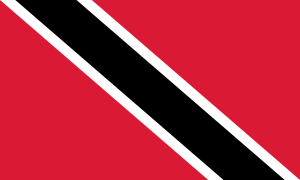 Trinidad and Tobago
Trinidad and Tobago United Kingdom of Great Britain and Northern Ireland
United Kingdom of Great Britain and Northern Ireland United States of America
United States of America Venezuela, Bolivarian Republic of
Venezuela, Bolivarian Republic of
The two member territories are:
Non-members
Region V (South-West Pacific)
Region V consists of 21 member states and 2 member territories. The member states are:[21]
 Australia
Australia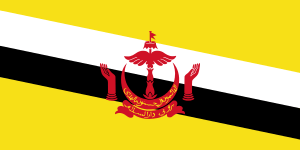 Brunei Darussalam
Brunei Darussalam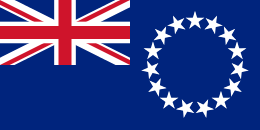 Cook Islands
Cook Islands Fiji
Fiji Indonesia
Indonesia Kiribati
Kiribati Malaysia
Malaysia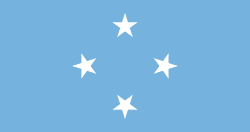 Federated States of Micronesia
Federated States of Micronesia New Zealand
New Zealand Niue
Niue Papua New Guinea
Papua New Guinea Philippines
Philippines Samoa
Samoa Singapore
Singapore Solomon Islands
Solomon Islands Timor-Leste
Timor-Leste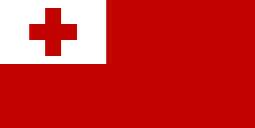 Tonga
Tonga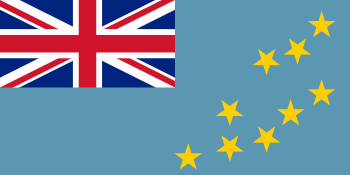 Tuvalu
Tuvalu United Kingdom of Great Britain and Northern Ireland
United Kingdom of Great Britain and Northern Ireland United States of America
United States of America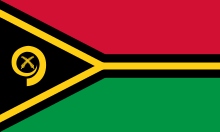 Vanuatu
Vanuatu
The ![]() Cook Islands and
Cook Islands and ![]() Niue (both are in free association with New Zealand)
Niue (both are in free association with New Zealand)
The member territories are:
Non-members
Region VI (Europe)
Region VI consists consist of all the states in Europe as well as some Western Asia. It has 50 member states:[22]
 Albania
Albania Armenia
Armenia Austria
Austria Azerbaijan
Azerbaijan Belarus
Belarus.svg.png) Belgium
Belgium Bosnia and Herzegovina
Bosnia and Herzegovina Bulgaria
Bulgaria Croatia
Croatia Cyprus
Cyprus Czech Republic
Czech Republic Denmark
Denmark Estonia
Estonia Finland
Finland France
France Georgia
Georgia Germany
Germany Greece
Greece Hungary
Hungary Iceland
Iceland Ireland
Ireland Israel
Israel Italy
Italy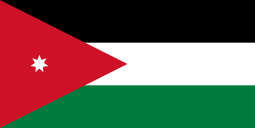 Jordan
Jordan Kazakhstan
Kazakhstan Latvia
Latvia Lebanon
Lebanon Lithuania
Lithuania Luxembourg
Luxembourg Malta
Malta Monaco
Monaco Montenegro
Montenegro Netherlands
Netherlands Norway
Norway Poland
Poland Portugal
Portugal Romania
Romania Republic of Moldova
Republic of Moldova Russian Federation
Russian Federation Serbia
Serbia Slovakia
Slovakia Slovenia
Slovenia Spain
Spain Sweden
Sweden Switzerland
Switzerland Syrian Arab Republic
Syrian Arab Republic Republic of Macedonia[23]
Republic of Macedonia[23] Turkey
Turkey Ukraine
Ukraine United Kingdom of Great Britain and Northern Ireland
United Kingdom of Great Britain and Northern Ireland
Non-members
States with membership in more than one region
A total of ten member states have membership in more than one region. Two nations are members to four different regions, while eight are members of two regions. These nations, with their regions, are as follows:
 France (Regions I, III, IV, and VI)
France (Regions I, III, IV, and VI) United Kingdom (Regions I, IV, V, and VI)
United Kingdom (Regions I, IV, V, and VI) Colombia (Regions III and IV)
Colombia (Regions III and IV) Kazakhstan (Regions II and VI)
Kazakhstan (Regions II and VI) Netherlands (Regions IV and VI)
Netherlands (Regions IV and VI) Portugal (Regions I and VI)
Portugal (Regions I and VI) Russian Federation (Regions II and VI)
Russian Federation (Regions II and VI) Spain (Regions I and VI)
Spain (Regions I and VI) United States of America (Regions IV and V)
United States of America (Regions IV and V) Venezuela (Regions III and IV)
Venezuela (Regions III and IV)
See also
- Aircraft Meteorological Data Relay (AMDAR)
- Cloud atlas
- Global Atmospheric Research Program (GARP)
- International Cloud Atlas
- Regional Specialized Meteorological Center
References
- ↑ Taalas, Petteri (1916). "Secretary-General". WMO. World Meteorological Organization. Retrieved 23 March 2016.
- ↑ Grimes, David. "President". WMO. World Meteorological Organization. Retrieved 23 March 2016.
- 1 2 "Who we are". World Meteorological Organization. 2015-12-02. Retrieved 2017-04-05.
- ↑ http://library.wmo.int/pmb_ged/wmo_1161_en.pdf WMO Strategic Plan
- 1 2 3 WMO Editor (2016). "World Meteorological Organization (WMO) at a glance". WMO Library. wmo.int.
- ↑ "WMO Greenhouse Gas Bulletins (GHG Bulletins)". library.wmo.int.
- ↑ https://public.wmo.int/en/media/press-release/climate-breaks-multiple-records-2016-global-impacts
- ↑ "IPCC Nobel Peace Prize". Nobel Prize Committee. 12 October 2007. Archived from the original on 5 February 2010. Retrieved 20 February 2010.
- ↑ "World Meteorological Day". World Meteorological Organization. Retrieved 15 July 2013.
- ↑ https://www.wmocloudatlas.org/home.html
- ↑ "International Meteorological Organization (IMO) Prize". World Meteorological Organization. 2015-12-09. Retrieved 2017-04-04.
- ↑ "Professor Dr Vilho Väisälä Awards". World Meteorological Organization. 2015-12-09. Retrieved 2017-04-04.
- ↑ "Norbert Gerbier-Mumm International Award". World Meteorological Organization. 2015-12-09. Retrieved 2017-04-04.
- ↑ "WMO Research Award for Young Scientists". World Meteorological Organization. 2015-12-09. Retrieved 2017-04-04.
- ↑ "Professor Mariolopoulos Award". World Meteorological Organization. 2015-12-09. Retrieved 2017-04-04.
- 1 2 3 "WMO - Members". World Meteorological Organization. Retrieved 6 March 2017.
- ↑ "Members of Regional Association I (Africa)". World Meteorological Organization. Retrieved 6 March 2017.
- ↑ "Members of Regional Association II (Asia)". World Meteorological Organization. Retrieved 6 March 2017.
- ↑ "Members of Regional Association III (South America)". World Meteorological Organization. Retrieved 6 March 2017.
- ↑ "Members of Regional Association IV (North America, Central America and the Caribbean)". World Meteorological Organization. Retrieved 6 March 2017.
- ↑ "Members of Regional Association V (South-West Pacific)". World Meteorological Organization. Retrieved 6 March 2017.
- ↑ "Members of Regional Association IV (Europe)". World Meteorological Organization. Retrieved 6 March 2017.
- ↑ Referred to by the United Nations as "The Former Yugoslav Republic of Macedonia" due to the Macedonia naming dispute.
External links
| Wikisource has original text related to this article: |
- World Meteorological Organization
- WMO country codes from the International Comprehensive Ocean-Atmosphere Data Set
- World Climate Conference-3 (WCC-3)
| Wikimedia Commons has media related to World Meteorological Organization. |
